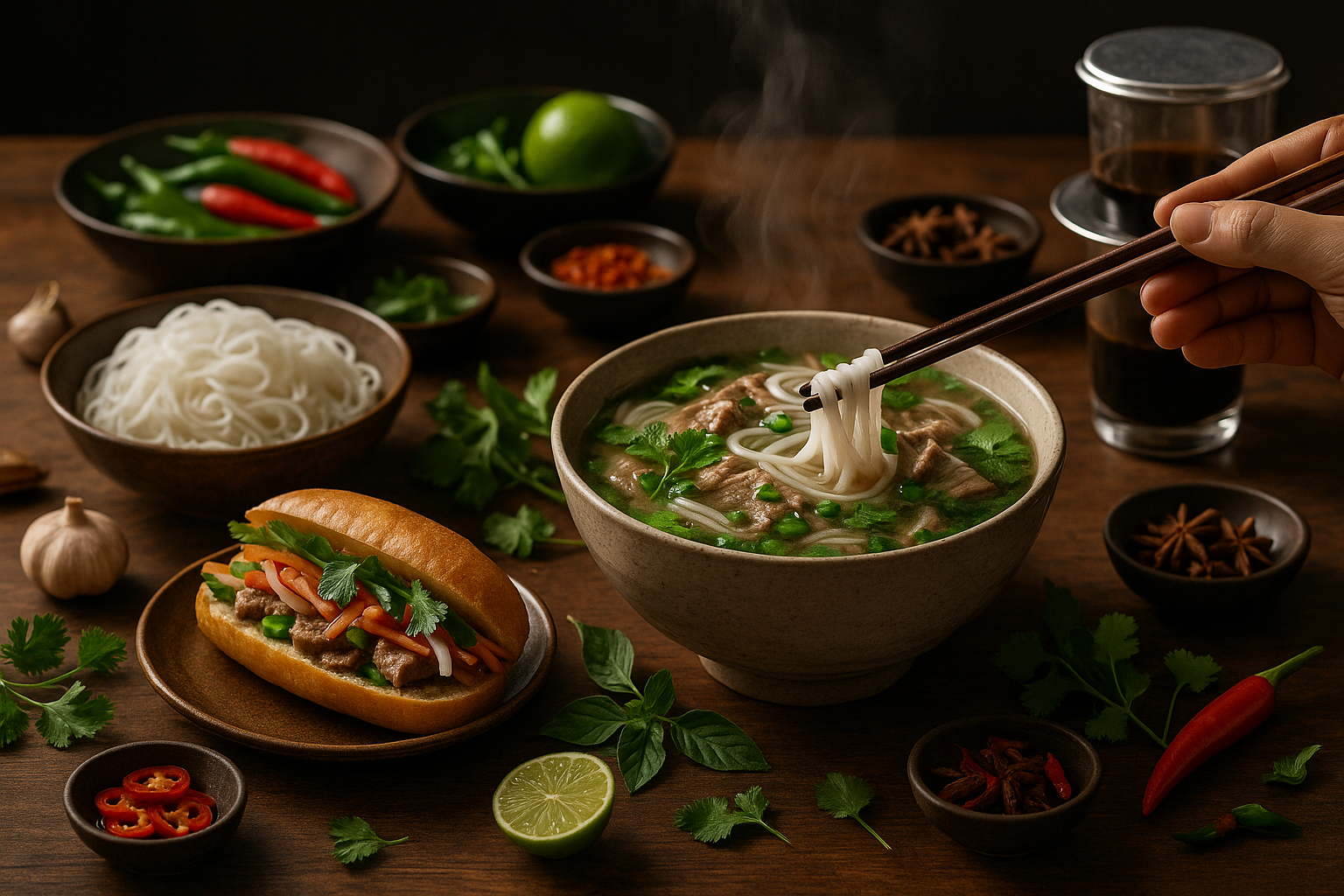Unveiling the Rich and Vibrant Flavors of Vietnamese Cuisine
Vietnamese cuisine, with its bright, fresh flavors, offers a culinary journey like no other. With a blend of flavor profiles that balance sweet, sour, salty, and umami, this cuisine is as diverse as the country itself. Let's delve into the aromatic world of Vietnamese food, examining its history, techniques, and signature dishes.

The Culinary Heritage of Vietnam
Vietnamese cuisine is a testament to the country’s rich history and cultural influences. With Chinese flavors in the north, Khmer influences in the south, and French colonial touches throughout, the cuisine is a vibrant tapestry of flavors. The use of fresh herbs, spices, and locally-sourced ingredients is a testament to the nation’s agricultural roots.
The Art of Balance in Vietnamese Cuisine
In Vietnamese cuisine, balance is key. The Yin and Yang concept plays a significant role in the preparation and pairing of dishes. Sweet and sour, hot and cold, cooked and raw – these contrasting elements come together harmoniously in every meal. This balance extends not just to flavor, but also to the colors and textures of the dishes.
The Core Ingredients of Vietnamese Dishes
Rice, in various forms, is the backbone of Vietnamese cuisine. From steamed rice to rice noodles, and from rice paper to rice wine, it features in almost every meal. Fish sauce, another staple, adds a salty, umami depth to dishes. Fresh herbs, like mint, basil, and cilantro, contribute vibrant flavors and aromas.
Signature Vietnamese Dishes
Phở, a noodle soup with beef or chicken, is arguably Vietnam’s most famous dish. Bánh mì, a sandwich that blends Vietnamese ingredients with a French baguette, showcases the country’s colonial influences. Gỏi cuốn, or fresh spring rolls, encapsulate the freshness and simplicity of Vietnamese cooking.
Vietnamese Beverages: More than Just Coffee
While Vietnam’s robust coffee culture is renowned worldwide, the country’s beverage scene extends far beyond its famous cà phê sữa đá. From sweet and creamy Chè drinks to the unique egg coffee, Vietnamese beverages are as diverse and flavorful as their culinary counterparts.
-
Tips and Tricks for Enjoying Vietnamese Cuisine
-
To enjoy Vietnamese food like a local, make sure to incorporate all your senses. Look at the vibrant colors, smell the fragrant herbs, listen to the crunch of fresh vegetables, feel the textures, and, of course, savor the taste.
-
Phở is usually eaten for breakfast in Vietnam. Try it this way for an authentic experience.
-
When eating Bánh mì, make sure to enjoy the contrast between the crusty bread and the soft, flavorful fillings.
-
Unraveling the intricacies of Vietnamese cuisine presents a fascinating culinary adventure. From the harmonious balance of flavors to the fresh, vibrant ingredients, every dish offers a unique taste of Vietnam’s rich cultural tapestry. Whether you’re a seasoned foodie or a culinary novice, exploring Vietnamese cuisine promises a flavorful journey that goes beyond the dining table. So, grab your chopsticks and embark on this gastronomic voyage – one flavorful bite at a time.




